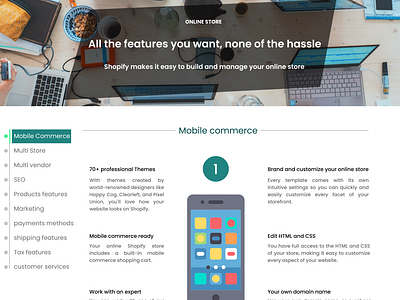Feature Base UI/UX Design
Designing a feature-rich user experience (UX) and user interface (UI) involves creating intuitive, visually appealing interfaces that effectively showcase the features and functionalities of a product or service. Here are key points to consider for feature-based UX/UI design:
User-Centered Design: Start by understanding the needs, preferences, and behaviors of the target users. Conduct user research, gather feedback, and create user personas to inform design decisions and ensure that the features meet users' needs.
Prioritize Features: Identify the core features that are essential for achieving the product's goals and meeting user needs. Prioritize these features in the design to ensure they are easily accessible and prominently displayed to users.
Streamlined Navigation: Design intuitive navigation paths that guide users to the features they need quickly and efficiently. Use clear labels, organized menus, and logical grouping of features to minimize cognitive load and improve usability.
Visual Hierarchy: Establish a visual hierarchy that highlights the most important features and content while de-emphasizing secondary elements. Use visual cues such as size, color, contrast, and placement to draw attention to key features and guide users' focus.
Interactive Elements: Incorporate interactive elements such as buttons, sliders, toggles, and tooltips to enhance the user experience and provide feedback. Use animations and transitions to make interactions feel natural and intuitive.
Consistent Design Language: Maintain consistency in design elements, such as colors, typography, icons, and patterns, across the interface. Consistency helps create a cohesive user experience and reinforces the brand identity.
Accessibility: Ensure that the interface is accessible to all users, including those with disabilities. Incorporate accessibility features such as alt text for images, keyboard navigation support, and readable font sizes to accommodate diverse user needs.
Feedback Mechanisms: Provide clear feedback to users when they interact with features, such as success messages, error notifications, and progress indicators. Feedback mechanisms help users understand the outcome of their actions and improve usability.
User Onboarding: Design a seamless onboarding experience to introduce new users to the features and functionalities of the product. Use interactive tutorials, guided tours, and tooltips to help users get started and familiarize themselves with the interface.
Continuous Iteration: Continuously gather user feedback, monitor usage metrics, and iterate on the design to improve the user experience over time. Regular updates and refinements based on user insights ensure that the product remains relevant and effective.
By focusing on these key points, feature-based UX/UI design can create engaging, intuitive interfaces that effectively showcase the product's features and provide a seamless user experience for customers.
